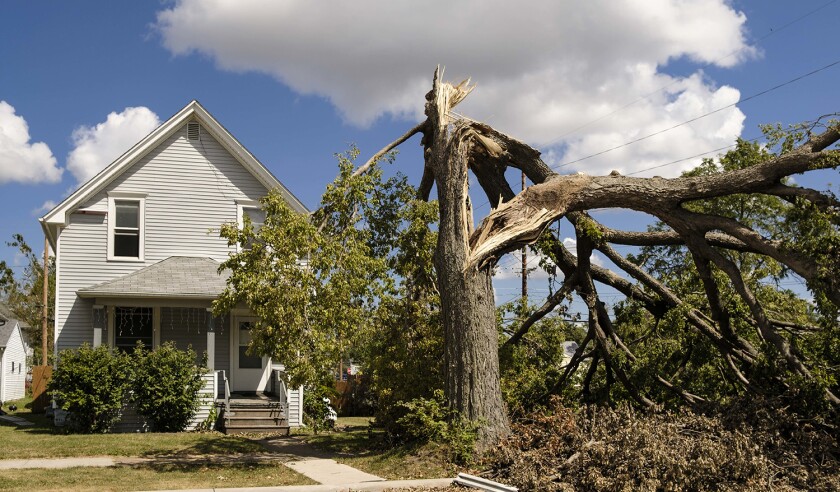
As extreme weather becomes increasingly common and severe across the country, property insurers may look to the cyber markets for clues on how to move forward and keep costs in check, Connecticut insurance commissioner Andrew Mais told Insurance Insider US.
In an interview with this publication ahead of the National Association of Insurance Commissioners’ (NAIC) summer meeting in Chicago, Mais said increasing risks from climate change highlight the need for more investment in mitigation and hardening to better withstand wildfires, high winds and other threats.
Mais, who is also president of the NAIC, said that approach would mirror the way the insurance industry has approached risks associated with cybersecurity.
Faced with the threat of high claims from things such as cyberattacks or ransomware, insurance companies have played an integral role in getting insureds to implement best practices.
Looking at climate risk to properties, Mais said regulators and insurers can push for greater mitigation and hardening there, too. Things such as updated building codes, tax breaks for upgrades or premium credits could all help get insureds to invest in solutions to the burgeoning problem.
Cyber insurers “wanted to make sure their systems were hardened, that they were resilient, so that would reduce the cost of any damage and make sure they could continue to do business,” Mais said. “We need to do the same thing with property insurance.”
The NAIC’s climate strategy
Mais’s statement is in line with the broader position of the NAIC, which in April released its first-ever National Climate Resilience Strategy under his leadership. The strategy was co-written by California insurance commissioner Ricardo Lara and Alaska division of insurance director Lori K Wing-Heier.
Mais noted that Lara and Wing-Heier work in states with very different climate threats (wildfires for California, permafrost melting in Alaska) and come from different political backgrounds (Lara ran for his seat as a Democrat, while Wing-Heier was appointed to hers by a Republican-led administration).
But their shared concern in the climate arena shows insurance regulators can work together to find templates for solutions that work in each state, he said.
He added that states such as Alabama – which created a program to provide grants to homeowners to retrofit their properties to protect against hurricane wind damage in 2011 – are also leading the charge, and that states like his, that have not yet seen major climate damages, should take note.
California has created a program that provides premium incentives for reducing wildfire risk through home hardening, while Minnesota has also passed a law requiring incentives for homeowners to fortify their properties, according to the NAIC.
“Mitigation may be seen as expensive, but it’s far less expensive than not mitigating the damage,” he said. “We simply cannot afford not to spend the money on mitigation.”
Increased concerns with AI
Beyond climate risks, Mais said AI has been a key issue for him as president of the NAIC, and as an insurance regulator in general.
At this point, he said, AI appears to be a technology that is here to stay. It is being incorporated into everything from smartphones to financial models, and regulators would be wise to embrace the technology to ensure it is used in a way that avoids biases that lead to discrimination, limits data vulnerabilities and eliminates potential inaccuracies.
The NAIC voted to adopt its model bulletin for the use of AI systems by insurers in December, and 19 states or US territories have adopted the this or issued their own regulatory guidance on the matter.
Mais said AI has possible downsides but huge upsides as well, including the potential to lower the cost of insurance products and help insurers provide better and more relevant products to consumers.
“The genie is out of the bottle,” Mais said. “We, as regulators, stand in for the customer, so we want to make sure there are guardrails there.”
He continued: “What we want to do is we want to make sure that the tide lifts all boats, we want it to be good for consumers and, ultimately, […] good for the communities we serve.”
